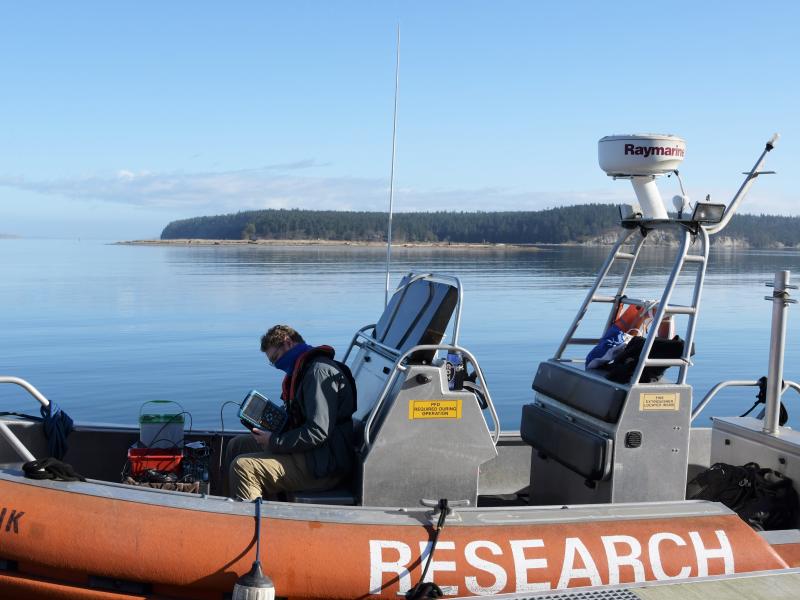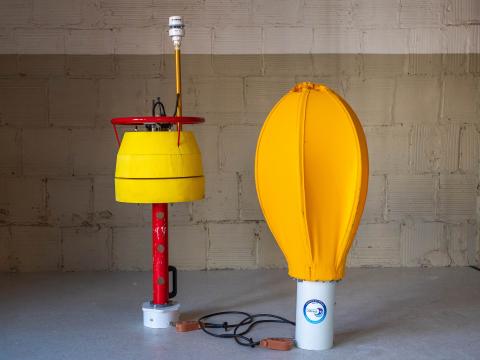
University of Washington Drifting Acoustic Instrumentation SYstem (DAISY)

Marine energy devices create noise that is important to quantify; however, it is challenging to differentiate background noise and device-associated noise. For example, it can be difficult to distinguish between radiated noise from the blades of a tidal turbine and other anthropogenic noise like hydraulic generator noise or baleen whale vocalizations. The University of Washington developed the Drifting Acoustic Instrumentation SYstem (DAISY) to separate the background from the sound produced by the device.
The lightweight, drifting spar buoys have a GPS, a marker light, an inertial measurement unit, a meteorological station, and data-collection electronics. Underneath the floating portion is the listening device, or hydrophone, connected by one of several attachment methods aimed to further improve the accuracy of characterizing the sound of a marine energy device. There are DAISYs for measuring in both current (C-DAISY) and wave (W-DAISY) environments.
In multiple tests supported by Pacific Northwest National Laboratory, three C-DAISYs were deployed in the Sequim Bay channel simultaneously. They were set to drift alongside a boat, which played a known sound source. Using information from multiple DAISYs, researchers can triangulate the source of a sound and determine whether it originated from a marine energy device or from another activity. In other tests, observations of the hydrodynamics of the DAISY have been made to assess how effective flow shields—protective, acoustically transparent covers—are at eliminating pseudo-noise that is associated with neither a marine energy device nor the natural environment but can be mistaken for real, low-frequency noise.
UW researchers have successfully reduced noise associated with waves contacting the floating portion of the W-DAISY, as well as water flow around the hydrophone and are now working to deploy groups of W-DAISYs around wave energy converters. Additionally, Pacific Northwest National Laboratory and UW worked together to develop an app that allows the DAISY units to be tracked in real-time during deployments on a ruggedized tablet, making the system easier to use in wavy or low-visibility conditions.
DAISYs are one type of several drifting hydrophone technologies available for marine energy underwater noise monitoring. In addition to providing software development and field-testing assistance, Triton helped benchmark performance of new systems against existing technologies. Triton’s team supported a comparison test of three different acoustic monitoring devices for marine energy, including UW’s DAISY, Integral Consulting’s NoiseSpotter, and Oregon State University’s drifting hydrophone, in calm, tidal current, and wave resource locations.
For final demonstration, the DAISY project will be conducting its final testing around the Oscilla Power Inc. Triton-C wave energy converter at the U.S. Navy Hawai'i Wave Energy Test Site.
FOA project DE-EE0007823
